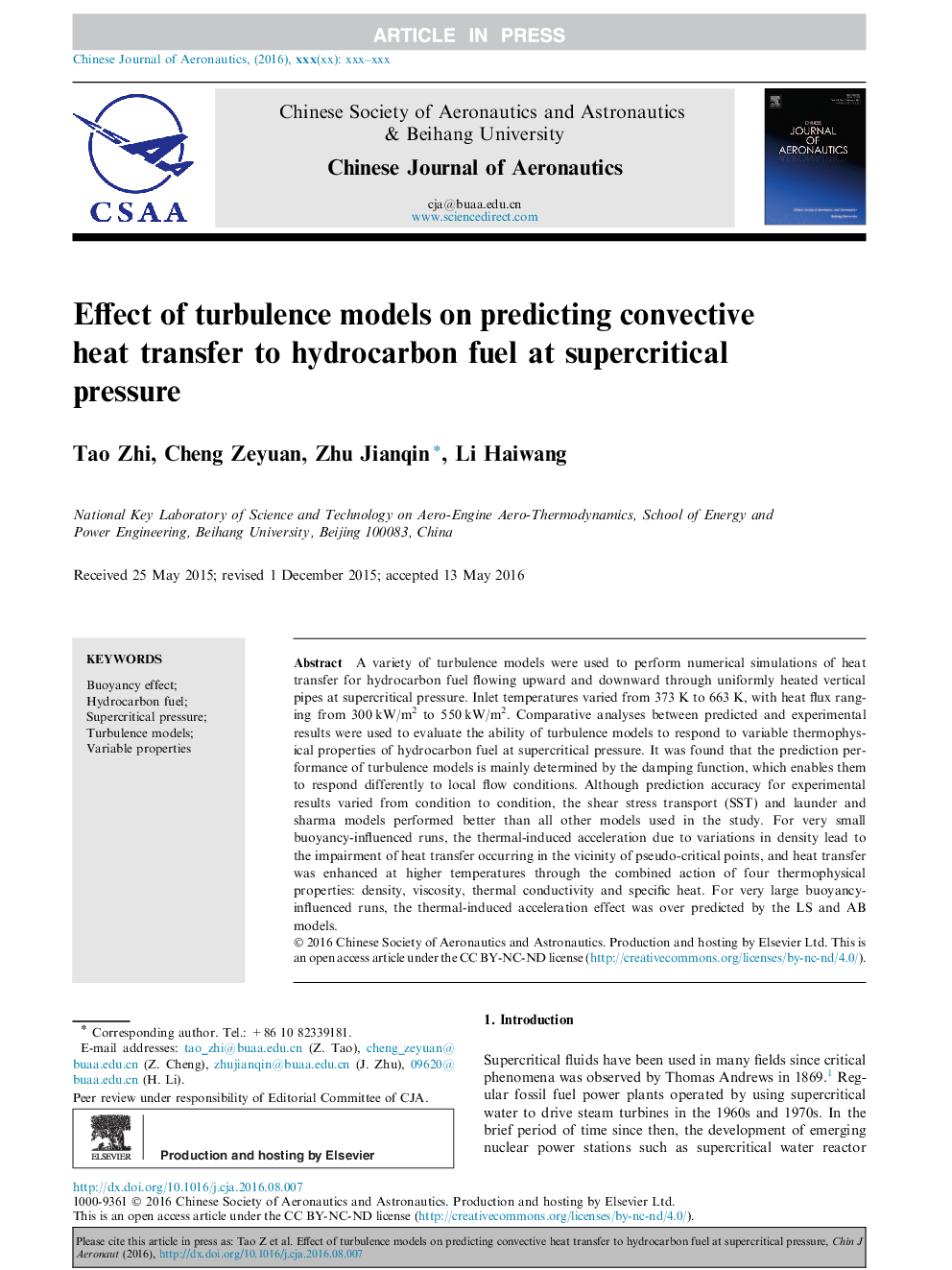| کد مقاله | کد نشریه | سال انتشار | مقاله انگلیسی | نسخه تمام متن |
|---|---|---|---|---|
| 7154323 | 1462499 | 2016 | 15 صفحه PDF | دانلود رایگان |
عنوان انگلیسی مقاله ISI
Effect of turbulence models on predicting convective heat transfer to hydrocarbon fuel at supercritical pressure
ترجمه فارسی عنوان
اثر مدل های آشوب در پیش بینی انتقال حرارت کنووا به سوخت هیدروکربن در فشار فوق بحرانی
دانلود مقاله + سفارش ترجمه
دانلود مقاله ISI انگلیسی
رایگان برای ایرانیان
کلمات کلیدی
اثر بویایی، سوخت هیدروکربن، فشار فوق بحرانی، مدل های آشفتگی خواص متغیر،
موضوعات مرتبط
مهندسی و علوم پایه
سایر رشته های مهندسی
مهندسی هوافضا
چکیده انگلیسی
A variety of turbulence models were used to perform numerical simulations of heat transfer for hydrocarbon fuel flowing upward and downward through uniformly heated vertical pipes at supercritical pressure. Inlet temperatures varied from 373Â K to 663Â K, with heat flux ranging from 300Â kW/m2 to 550Â kW/m2. Comparative analyses between predicted and experimental results were used to evaluate the ability of turbulence models to respond to variable thermophysical properties of hydrocarbon fuel at supercritical pressure. It was found that the prediction performance of turbulence models is mainly determined by the damping function, which enables them to respond differently to local flow conditions. Although prediction accuracy for experimental results varied from condition to condition, the shear stress transport (SST) and launder and sharma models performed better than all other models used in the study. For very small buoyancy-influenced runs, the thermal-induced acceleration due to variations in density lead to the impairment of heat transfer occurring in the vicinity of pseudo-critical points, and heat transfer was enhanced at higher temperatures through the combined action of four thermophysical properties: density, viscosity, thermal conductivity and specific heat. For very large buoyancy-influenced runs, the thermal-induced acceleration effect was over predicted by the LS and AB models.
ناشر
Database: Elsevier - ScienceDirect (ساینس دایرکت)
Journal: Chinese Journal of Aeronautics - Volume 29, Issue 5, October 2016, Pages 1247-1261
Journal: Chinese Journal of Aeronautics - Volume 29, Issue 5, October 2016, Pages 1247-1261
نویسندگان
Tao Zhi, Cheng Zeyuan, Zhu Jianqin, Li Haiwang,
